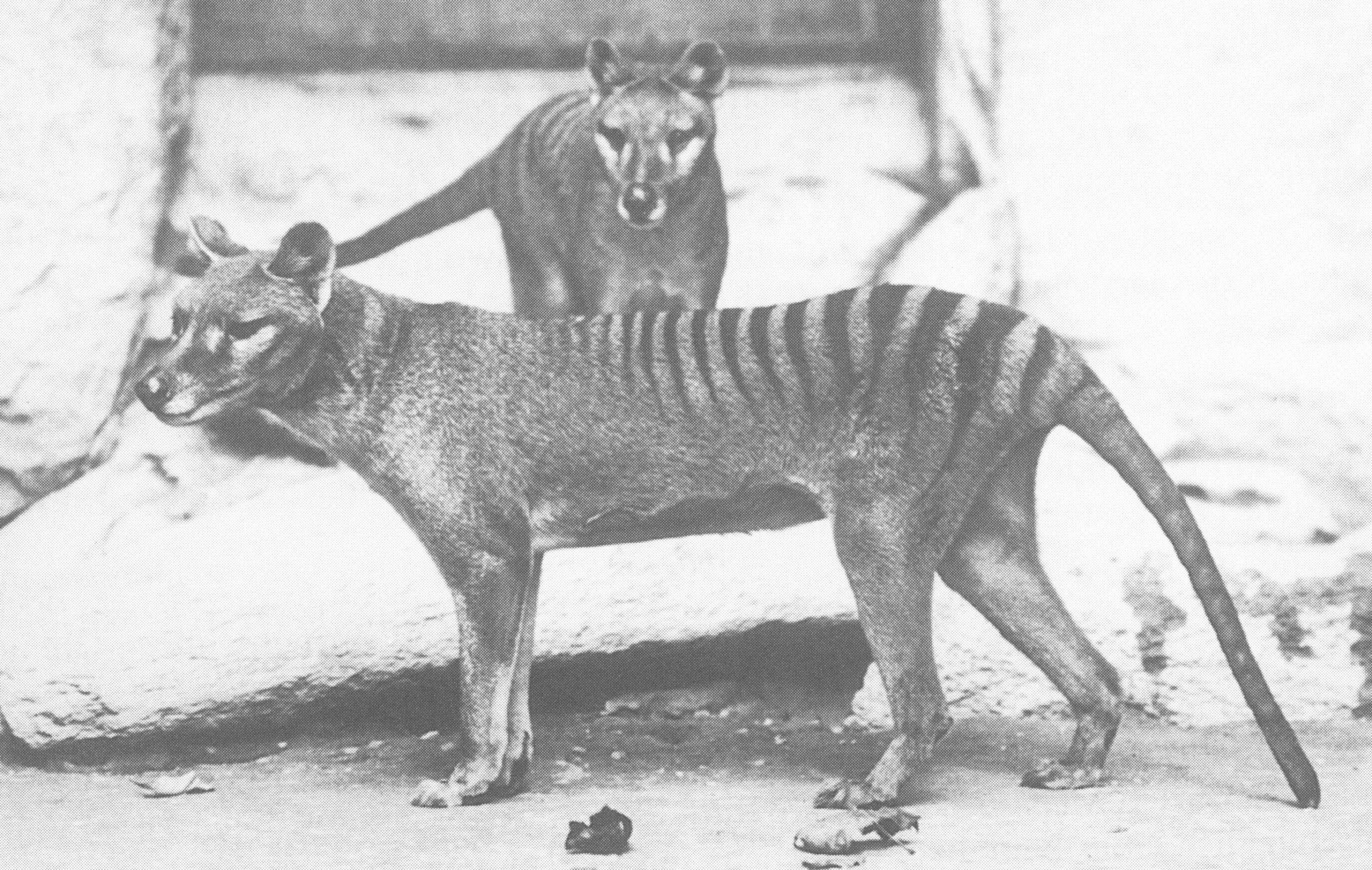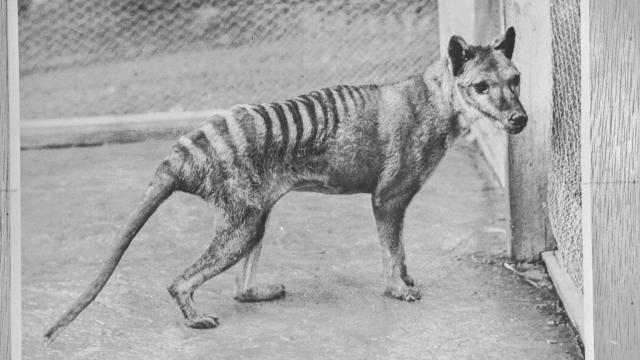Of all the animals to have gone extinct since humans were around to notice, perhaps none loom as large in our collective consciousness as the thylacine, commonly known as the Tasmanian tiger. Unlike the dodo or the woolly mammoth, the thylacine is still lit, however dimly, in living memory. In fact, since the last known member of the species died in a zoo in 1936, supposed sightings of the creature have continued to be reported at a steady clip, including one just last week.
Recently, a study posted as a preprint on bioRxiv — meaning it’s yet to go through peer review — has compiled decades of reports of sightings (spanning from 1910 to 2019) in one database, in an attempt to better estimate the extinction timeline of the world’s largest carnivorous marsupial. Based on their analysis of these reports, the team places the thylacine’s likeliest extinction timeline somewhere between the 1990s and the turn of the new millennium — a far cry from when much of the world gave up on the animal.
“I think science has been too cavalier in their dismissal of sightings, even if most of them are wrong,” Barry Brook, an ecologist and conservation biologist at the University of Tasmania, said in a video call.
Brook, lead author of the new paper, knows that many of the reports in the database aren’t genuine sightings. But he still thinks it’s valuable to document them. “We don’t believe or disbelieve these sightings; we just take them into account,” he said.
Given humans’ suggestible imaginations and that so many creatures can be mistaken for thylacines — animals like Tasmanian devils, quolls, potoroos, numbats, and mangy dogs — it’s likely that most of the reports in the database can be easily explained by something other than the thylacine still existing. The reports are defined based on the witness and the type of evidence. Witnesses are separated into expert sightings (a group that includes hunters back in the day and modern park rangers and field biologists) and non-expert sightings (for example, a couple who spotted a doglike creature on a drive across Tasmania in 2018 or a 2004 account by a camper who heard what they thought was a thylacine).

As for the evidence, there are the very reliable physical specimens (of course, none of these have been found since 1936, and they’re considered reliable because it’s rare that a physical thylacine capture or kill would be misidentified), followed by visual accounts, which make up the bulk of public reports, and then trace evidence like possible tracks, vocalisations, predation, and dens. About half of the reports in the database are non-expert sightings of varying quality. An example of what Brook would consider a reliable sighting is a 1980s report in which a longtime park ranger claimed that he saw a thylacine under the glare of a flashlight and that it stayed there long enough for him to count all of its stripes.
Imperfect as it may be, citizen science is a good way for scientists to crowdsource data, especially for hard-to-spot critters. In 2019, a platypus conservancy organisation set up an initiative for members of the public to report platypus sightings, for example, as the aquatic monotremes are nocturnal and their geographic spread isn’t well known. Brook wants thylacine reports to get similar treatment.
“There’s only a 5% chance that they [public reports] got it right,” he said. “And yet, when you still look at the abundance of the sightings and the geographical clustering of them, and the other circumstances around them, in aggregate, it turns out that can change significantly our estimates of when the species persisted, well, well beyond that accepted date of the last dead specimen from a zoo.”

The thylacine was only officially declared extinct by the International Union for the Conservation of Nature in 1982 and the government of Tasmania in 1986. In time, the people who could expertly identify thylacines — ironically, many of whom once trapped them — began to die off. Now, “expert” thylacine sightings, as Brook’s team has termed them, are more experts by exclusion; they’re field biologists and the like, who are acquainted enough with the animals of the bush that they’d recognise evidence of a thylacine by virtue of what they know it not to be.
“This isn’t the first time this has been attempted, but it’s obviously, like, almost the exact opposite conclusion that’s been made,” Jack Ashby, a natural historian of Australia at the University of Cambridge’s Museum of Zoology, who was unaffiliated with the recent paper, said in a video call. Ashby was referencing a 2018 paper in Conservation Biology that estimated the thylacine’s actual extinction at 1940 and in the 1950s at the latest. That paper said that any continued search for the species “is likely to be fruitless.”
“The undeniable contribution they’ve made is compiling 1,200-plus records of thylacines since 1910,” Ashby said. “That’s astonishingly useful. It’s a huge contribution to thylacine research, because that is now publicly available.”
Previously, thylacine sighting data was disparate. Anecdotal shreds would pop up here and there, in local papers and second-hand on online forums. The same sightings would have slightly different details in different accounts, and Brook’s team spent three years bringing all that data together and organising it based on the type of sighting, the location, who spotted it and their credibility, among other factors.
Brook said that in compiling the data and mapping it out, the team already has been able to better understand different sightings in context; for example, they noted that sightings that occur in a short period of time across a map can seem to resemble the route of an animal. Whether that animal was a thylacine, much less whether the sightings were all bona fide, is another story. Regardless, the team intends to make the dataset a living document, to continue to catalogue sightings as they happen.
Brook added that the thylacine is “almost certainly extinct,” but that the odds of its survival are “certainly not zero.” Perhaps that’s the habitat of hope, similarly small to that of any threatened species.
